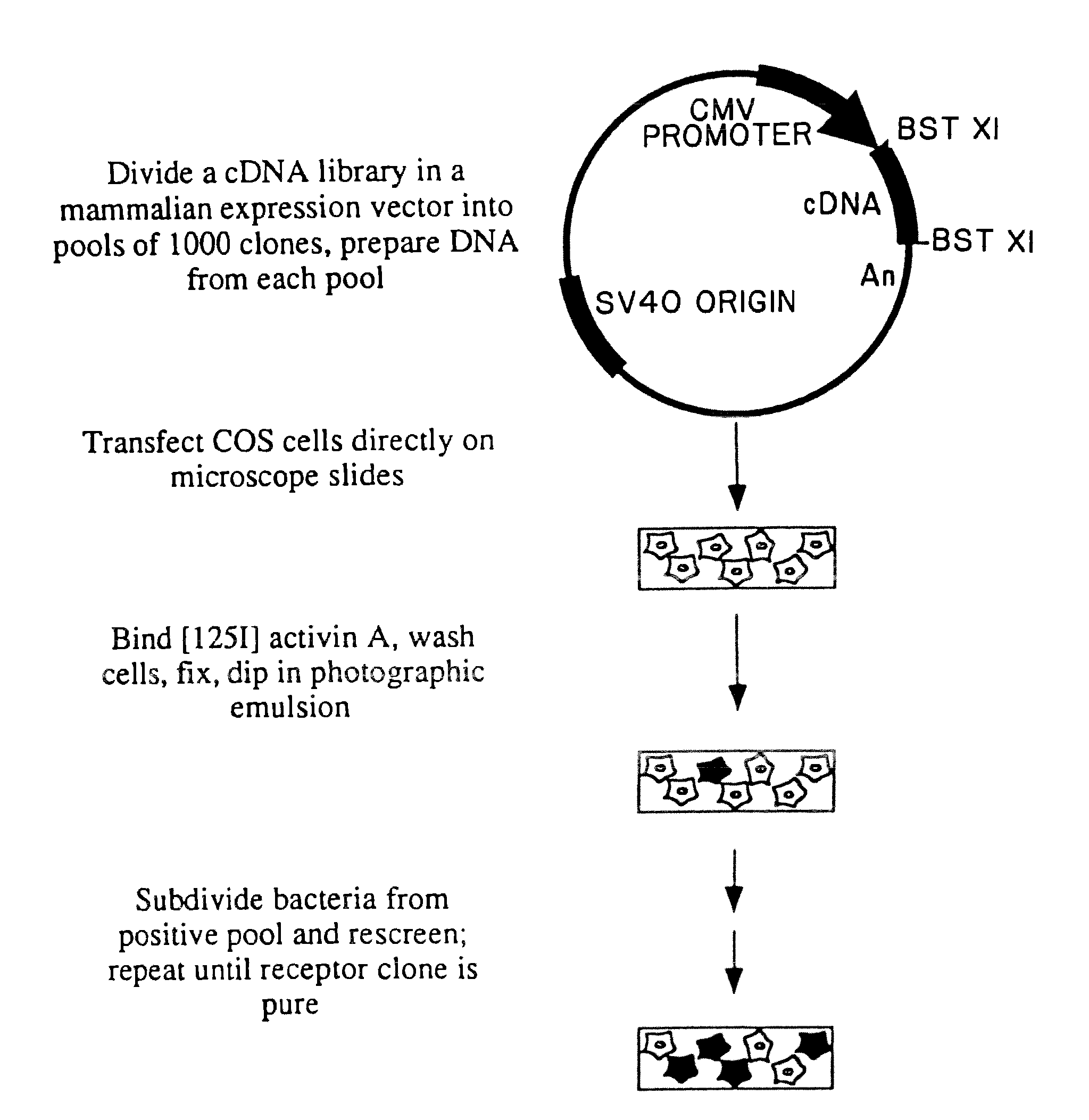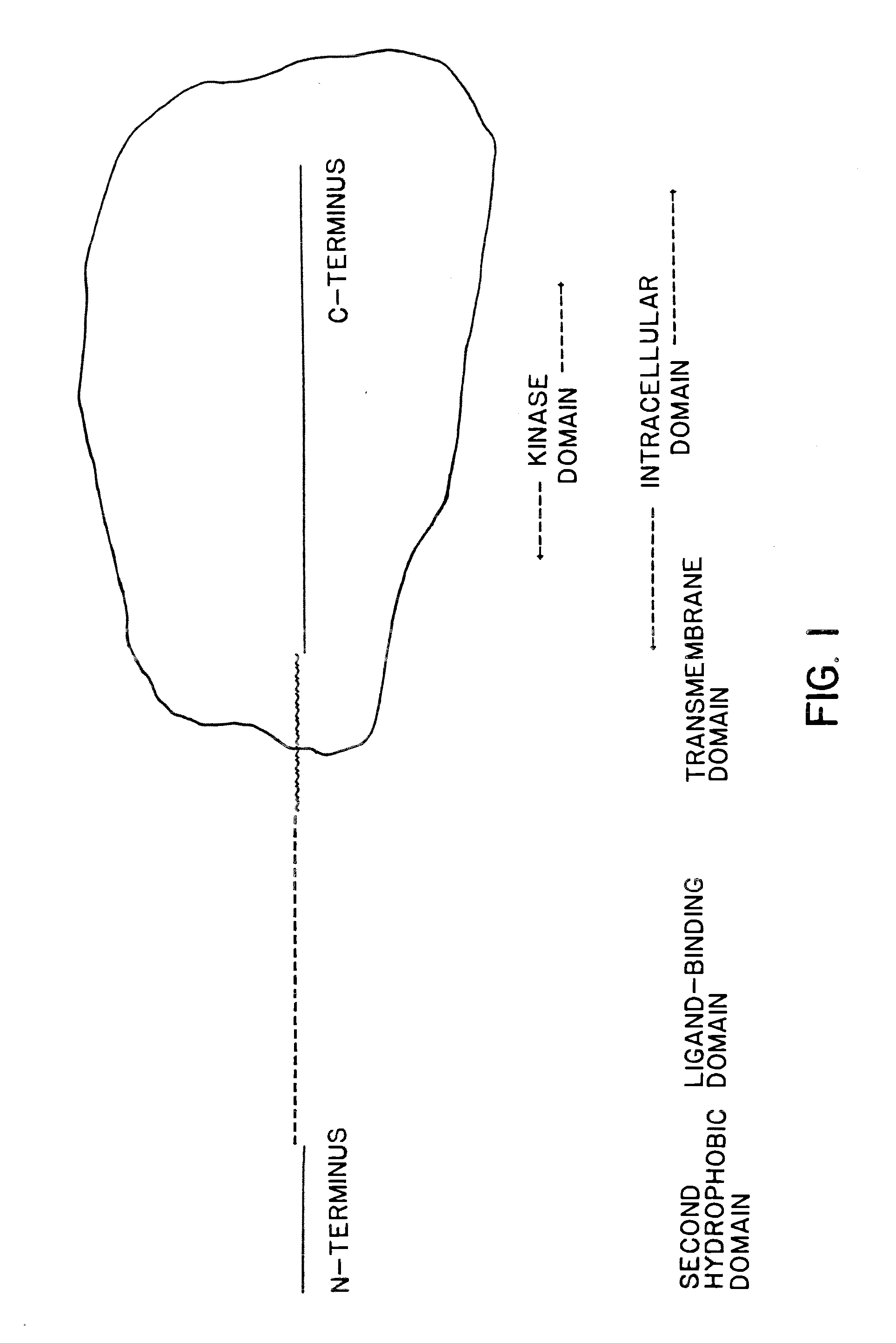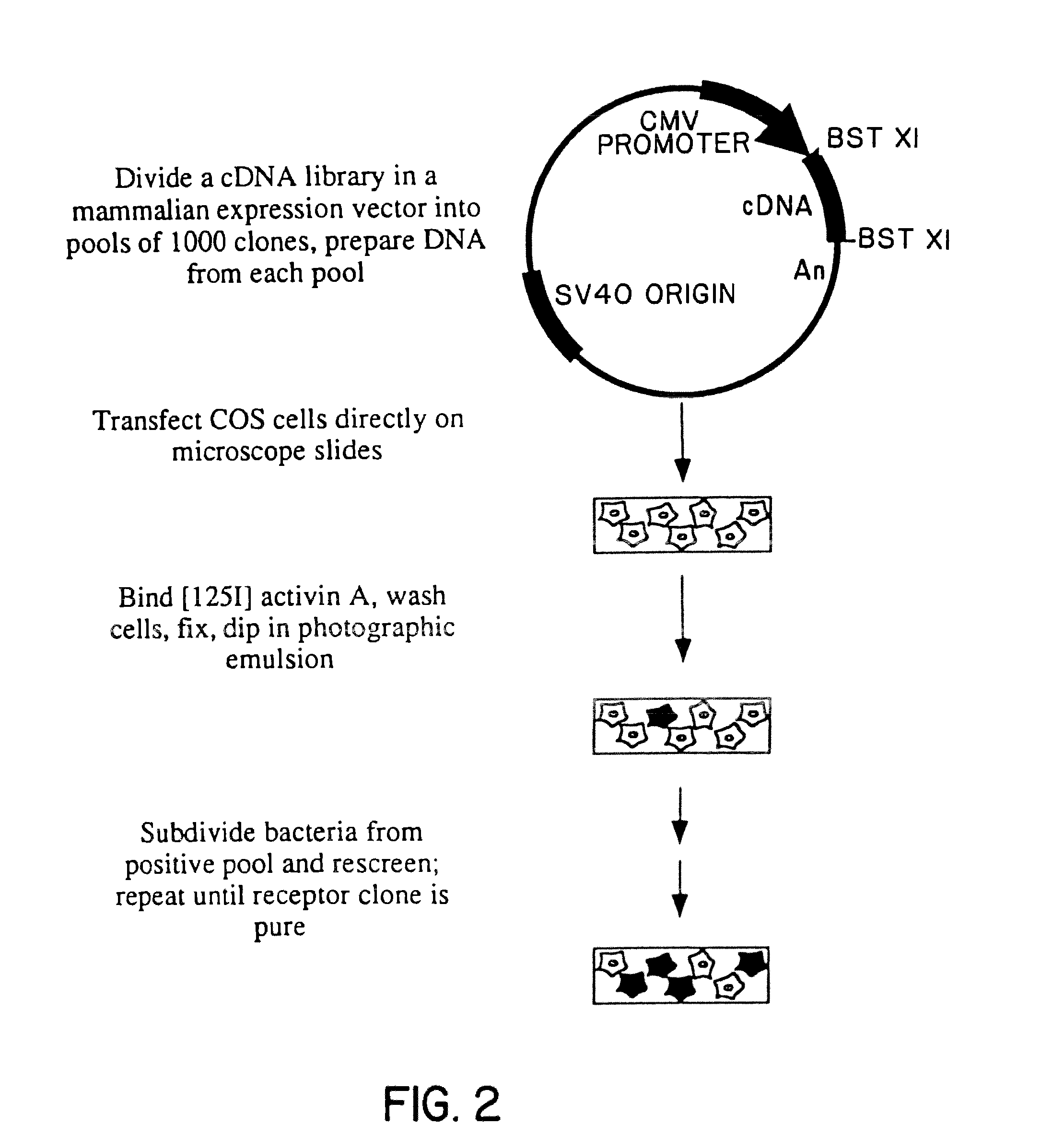Cloning and recombinant production of receptor(s) of the activin/tgf-beta superfamily
a superfamily and activin technology, applied in the field of cloning and recombinant production of receptors of the activin/tgfbeta superfamily, can solve the problems of little known about the structure of these receptors, or about the second messenger signalling system
- Summary
- Abstract
- Description
- Claims
- Application Information
AI Technical Summary
Benefits of technology
Problems solved by technology
Method used
Image
Examples
examples
[0127]Recombinant human (rh) activin A, rh activin B, and rh inhibin A were generously provided by Genentech, Inc. Porcine TGF-β1 was obtained from R+D Systems.
[0128]Double-stranded DNA was sequenced by the dideoxy chain termination method using the Sequenase reagents from US Biochemicals. Comparison of DNA sequences to databases was performed using the FASTA program [Pearson and Lipman, Proc. Natl. Acad. Sci. USA 85: 2444-2448 (1988)].
example i
Construction and Subdivision of AtT20 cDNA Library
[0129]Polyadenylated RNA was prepared from AtT20 cells using the Fast Track reagents from InVitrogen. cDNA was commercially synthesized and ligated into the plasmid vector pcDNA1 using non-palindromic BstXI linkers, yielding a library of approximately 5×106 primary recombinants. The unamplified cDNA library was plated at 1000 clones per 100 mm plate, then scraped off the plates, frozen in glycerol and stored at −70° C.
[0130]Activin suppresses adrenocorticotrophic hormone (ACTH) secretion by both primary anterior pituitary cell cultures [Vale et al., Nature 321: 776-779 (1986)] and AtT20 mouse corticotropic cells. Because AtT20 cells possess activin receptors indistinguishable from those on other cell types (based on binding affinity measurements with activin A), these cells were chosen to be the source of cDNA for transfection. A cDNA library of approximately 5×106 independent clones from AtT20 cells was constructed in the mammalian ...
example ii
COS Cell Transfection
[0132]Aliquots of the frozen pools of clones from Example I were grown overnight in 3 ml cultures of terrific broth, and mini-prep DNA prepared from 1.5 ml using the alkaline lysis method [Maniatis et al. Molecular Cloning (Cold Spring Harbor Laboratory (1982)]. 1 / 10 of the DNA from a mini-prep (10 Ml of 100 Ml) was used for each transfection.
[0133]2×105 COS cells were plated on chambered microscope slides (1 chamber—Nunc) that had been coated with 20 μg / ml poly-D-lysine and allowed to attach for at least 3 hours. Cells were subjected to DEAE-Dextran mediated transfection as follows. 1.5 ml of serum-free Dulbecco's Modified Eagle's medium (DME) containing 100 mM chloroquine was added to the cells. DNA was precipitated in 200 ml DME / chloroquine containing 500 mg / ml DEAE-Dextran, then added to the cells. The cells were incubated at 37° for 4 hours, then the media was removed and the cells were treated with 10% DMSO in HEPES buffered saline for 2 minutes. Fresh med...
PUM
| Property | Measurement | Unit |
|---|---|---|
| temperature | aaaaa | aaaaa |
| temperature | aaaaa | aaaaa |
| pH | aaaaa | aaaaa |
Abstract
Description
Claims
Application Information
 Login to View More
Login to View More - R&D
- Intellectual Property
- Life Sciences
- Materials
- Tech Scout
- Unparalleled Data Quality
- Higher Quality Content
- 60% Fewer Hallucinations
Browse by: Latest US Patents, China's latest patents, Technical Efficacy Thesaurus, Application Domain, Technology Topic, Popular Technical Reports.
© 2025 PatSnap. All rights reserved.Legal|Privacy policy|Modern Slavery Act Transparency Statement|Sitemap|About US| Contact US: help@patsnap.com



